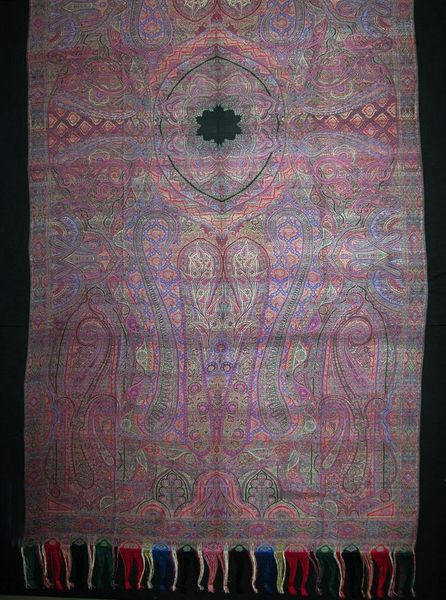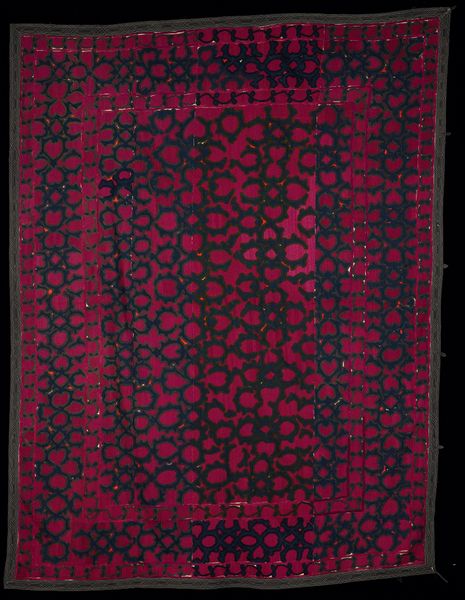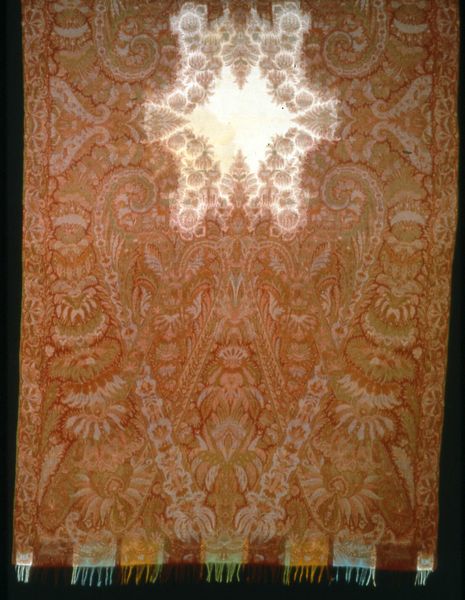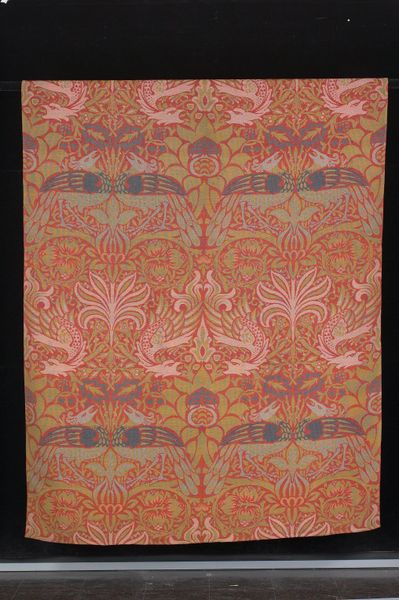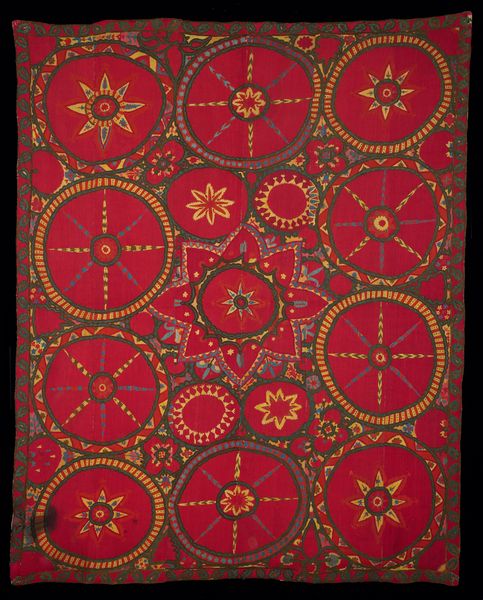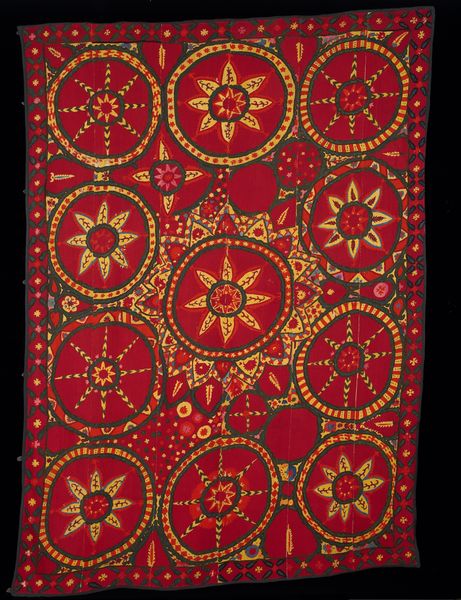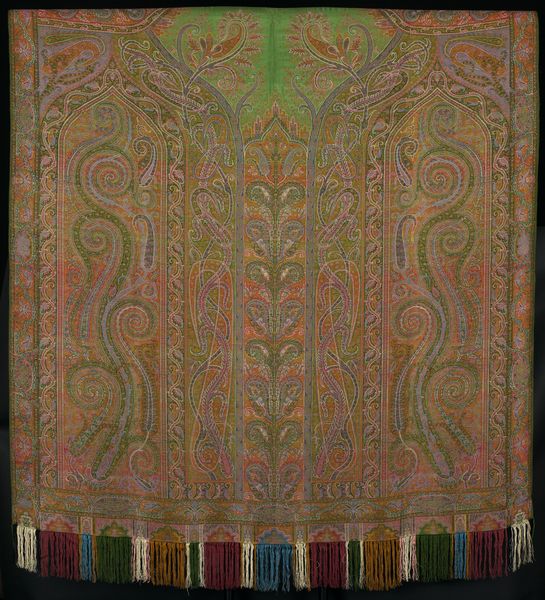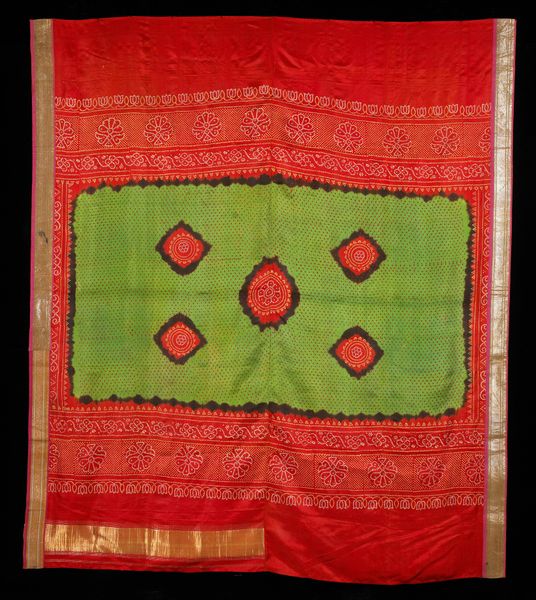
fibre-art, weaving, textile
#
natural stone pattern
#
fibre-art
#
naturalistic pattern
#
pattern
#
pattern
#
weaving
#
textile
#
text
#
geometric pattern
#
abstract pattern
#
minimal pattern
#
organic pattern
#
flower pattern
#
orientalism
#
costume
#
pattern repetition
#
layered pattern
Dimensions: 388.62 × 168.91 cm (153 × 66 1/2 in.)
Copyright: Public Domain
Editor: This is a shawl from the 1860s by Clabburn, Sons and Crisp, currently held at the Art Institute of Chicago. It's a textile artwork, bursting with pinks and oranges. I’m really struck by how intricate the pattern is; it’s almost dizzying! What can you tell me about this work? Curator: Oh, dizzying is the word, darling! It's like falling into a kaleidoscope. These paisley patterns – each a tiny universe – they were wildly fashionable at the time, weren’t they? They became quite popular around this period. Look at how densely packed the motifs are, each swirling teardrop fighting for space. Do you sense a kind of visual tension there? Editor: Yes, definitely a tension! It feels almost overwhelming, in a way. Is that typical of these shawls? Curator: Exactly! Think about the women who wore these. It was a signifier of status, sure, but I also think there's something powerful in cloaking oneself in this swirling vortex. Almost a form of…dare I say it…quiet rebellion against Victorian restraint. What do you think? Editor: That's a fascinating way to look at it, actually! I had been thinking it was just decorative, but you've given me a whole new perspective. The intricacy almost becomes a statement. Curator: Precisely! It’s a reminder that even the most decorative objects can hold stories. And maybe even a little bit of mischief, don't you think? Editor: Absolutely. I'll definitely see shawls differently now. Thank you!
Comments
No comments
Be the first to comment and join the conversation on the ultimate creative platform.
